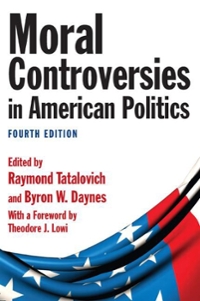Question
1 (i) List four key stakeholders in the risk governance of a life insurance company. [2] (ii) Describe how each of the stakeholders in part
1 (i) List four key stakeholders in the risk governance of a life insurance company.
[2]
(ii) Describe how each of the stakeholders in part (i) could contribute to the risk
governance of the company. [4]
[Total 6]
2 (i) Define the Minimum Capital Requirement and the Solvency Capital
Requirement under the Solvency II regime. [2]
(ii) Explain why an insurance company might use an internal model to assess its
regulatory capital requirements. [4]
[Total 6]
3 Over the last five years in a particular country, the government has been reducing
the amount of state healthcare it provides, while the population size has remained
unchanged.
An insurance company operating in that country sells a variety of domestic products
and is considering the implications of the healthcare reductions for its pricing
assumptions.
Discuss the implications for the pricing assumptions of each of the company's
products sold in that country:
(a) Term assurance
(b) Medically underwritten annuity (where the policyholder provided information
on their health status at application stage)
(c) Private medical care
(d) Funeral cover (where the insurance company pays the funeral costs for the
policyholder).
[8]
4 A general insurance company offers a worldwide travel insurance policy that provides
coverage against the following risks:
medical cover required whilst in a foreign country
loss of luggage whilst travelling
flight delays of more than three hours.
Describe tools that the insurance company can use to aid the management and control
of the above risks. [10] CP11 A2019-3 PLEASE TURN OVER
5 (i) Set out specific expense loadings that need to be considered for a long-term
insurance contract. [5]
(ii) Describe how to carry out an expense analysis for the purpose of pricing a new
long-term insurance contract. [5]
[Total 10]
6 (i) State what is meant by a 'best estimate' assumption. [1]
(ii) Give two examples where a 'best estimate' assumption would be suitable. [2]
(iii) Describe three methods of allowing for risk in cash flows. [6]
(iv) Discuss the purpose of equalisation reserves. [3]
(v) Suggest why a regulatory regime may not recognise equalisation reserves. [2]
[Total 14]
7 A retirement benefits scheme in Country A ('the Scheme') currently has all of its
funds invested in domestic, as opposed to overseas, assets. The Scheme's managers
are reviewing the fixed interest bonds currently held. They propose to invest a portion
of the Scheme's assets in government bonds issued in Country B, which currently
have a lower redemption yield than comparable bonds of Country A.
(i) Suggest possible reasons for the Scheme managers' proposal. [4]
(ii) Discuss factors which the Scheme's managers would need to take into account
if the proposal were to be accepted. [5]
The Scheme's managers decide, instead, to switch all of the Scheme's government
bonds (still of Country A) into recently issued corporate bonds from the retail sector
of Country A.
(iii) Explain possible reasons for this decision. [3]
(iv) Discuss the risk characteristics of retail sector corporate bonds
Step by Step Solution
There are 3 Steps involved in it
Step: 1

Get Instant Access to Expert-Tailored Solutions
See step-by-step solutions with expert insights and AI powered tools for academic success
Step: 2

Step: 3

Ace Your Homework with AI
Get the answers you need in no time with our AI-driven, step-by-step assistance
Get Started


